Be aware of cycles periods
Very often I receive questions that have something in common. These questions may be very different, though the main issue there is about remembering the periods or longevity of analyzed phenomena. In this article several examples will be considered, and I hope that you can find here the answers to your or similar questions.
Question #1: Why these intervals in ULE module are overlapped? The Moon
cannot be located in ![]() and in
and in ![]() at the
same time. Daily
data were analyzed.
at the
same time. Daily
data were analyzed.
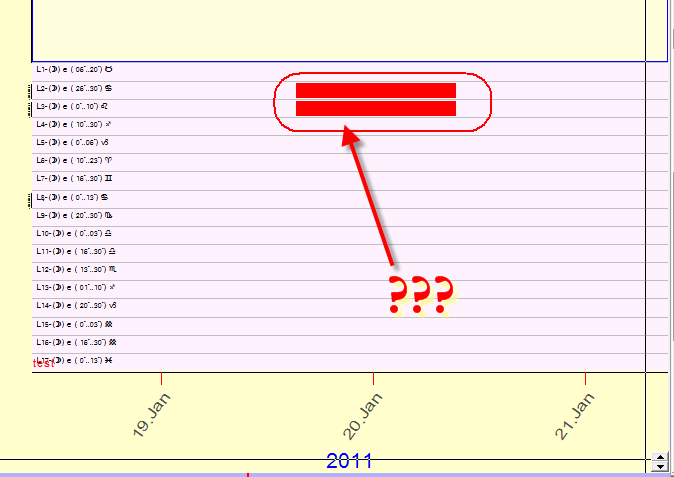
The answer: What is the Moon's daily traveling path? The average path is 12 degrees per day, i.e. one degree every 2 hours. When we analyze the phenomenon "the Moon located in 26-30 degrees Leo", the Moon travels 4 degrees interval; so in 4 degrees x 2 hours = 8 hours. Using daily data we can simply skip this phenomenon.
In order to solve this problem I recommend to use a smaller step of calculations, instead of 1 day step try to set the step as 2 hours. Do it this way:
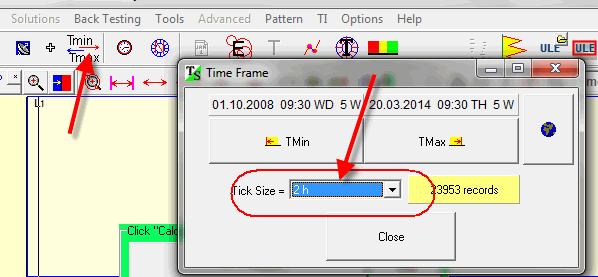
The Moon travels 1 degree within this time interval, so you will not
skip ![]() this phenomenon.
this phenomenon.
See how this ULE event looks now:
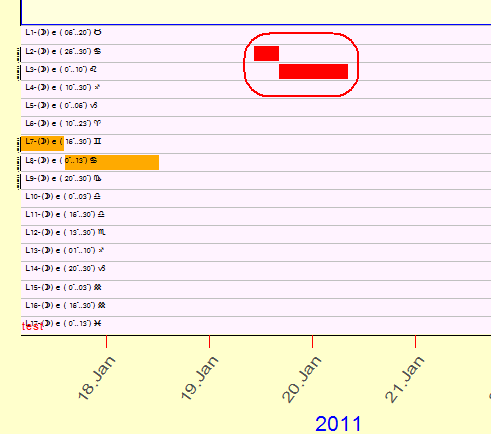
Question #2: Why the aspect "transiting Asc-conjuncts-transiting Sun orb=10 degrees" does not work for DAILY data?
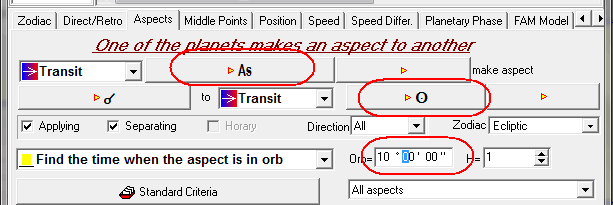
The key parameter here is longevity of the analyzed aspect. In average Asc moves 1 degree every 4 minutes of time (sometimes slower, sometimes faster). Accordingly. the Asc travels for 10 degrees in 40 minutes of time. Therefore, the longevity of this aspect is 80 minutes of time (10 degrees prior and 10 degrees after the culmination). To browse this aspect, you need to use time step 30 minutes at least, better 5 minutes. So this aspect is suitable for intraday data only, for daily data it is useless.
Question #2A: Why the aspect "In Mundo Zodiac and planetary hours do not work for DAILY data? - the answer is the same as Question #2
Question #3: While doing planetary steps for Uranus helio, why the step=70, 140, 210 degrees does not work?
The key parameter here is the period of Uranus in Helio, it makes the whole cycle within 84 years. Accordingly it travels through each sign of Zodiac (30 degrees) within 7 years in average. So, to analyze 70 degrees, we need 15-20 years of price history. If you have less price history, you simply can skip these steps. Look how these 70 degrees steps look:
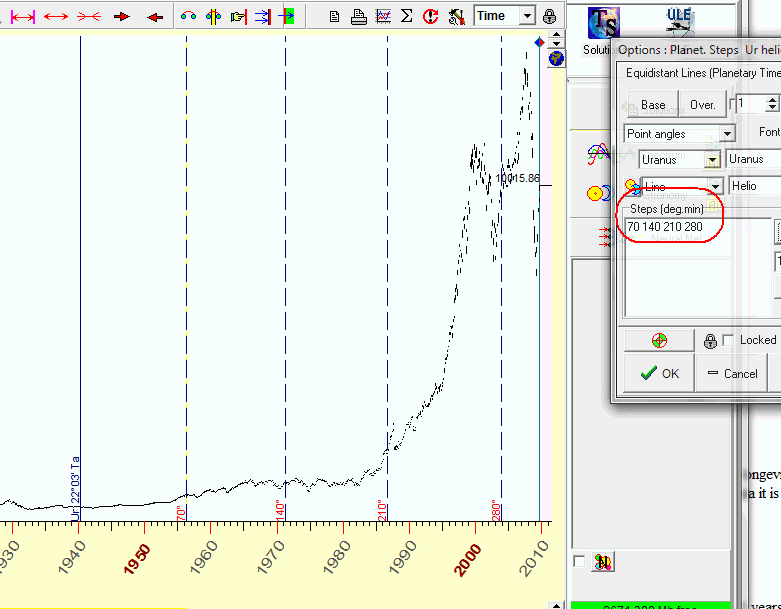
Question #4:
I was trying to look at a plot of price to quantity of
planets in Cardinal vs. Fixed modalities and compare using planets only vs.
planets plus transneptunians.
Things got strange when the results show identical plots
for using planets only and using planets with the TNPs.
The first question you should ask yourselves is: what is the period of tranplutonian planets? The fastest we know is Isis, its period is 350 years.
It means that this planet passes one Zodiacal sign within almost 30 years (350 years / 12 signs of Zodiac). It means that Isis passes 3 signs of Zodiac a bit less than within 90 years, it means that Isis moves from one Cardinal sign (suppose Aries) to another (suppose Cancer) in 90 years. In other words, this event is TOO SLOW, and if we consider 40 years price history as in the example below we simply do not see the difference between Cardinal indexes calculated with and without Isis. See the picture below:

This is because that during this 40-years period Isis did not pass Cardinal signs. To see this difference, we should analyze much longer price history. Look at another example, here we analyze more than 200 years of price history:

During these 200 years Isis has passed Cardinal signs twice.
This fact causes a small difference in cardinal index calculated with and without Isis, see below:
